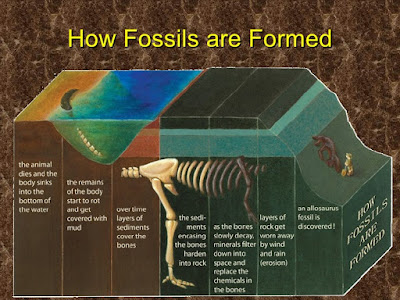3 major events in Earth's history would probably be the rise of oxygen in the atmosphere, the dinosaur extinction, and the splitting of Pangea. As blue-green algae and cyanobacteria photosynthesized, the levels of oxygen on the earth increased immensely during the Precambrian Era. This is extremely important and contributed to the existence of oxygen dependent organisms like ourselves. The Pangea was a supercontinent that used to be a large mass of land that covered roughly1/3 of the earth. It was broken up during the Mesozoic Era, and it was a big part of Earth's history because it created changes in the climate and atmosphere, and it also gave us all the different continents we have today. Lastly, the end of the Mesozoic Era marked a mass extinction that wiped out the dinosaurs who previously dominated land on Earth. Earth today would be very different if dinosaurs still roamed the earth.
Like I mentioned before, human existence is just a blink of an eye in terms of the earth's geologic history. In the considerably "small" amount of time we have been on Earth, we have done some major irreversible damage as a species. Although a lot of major life forms arose in the later epochs of the geologic time line, some other major events are currently occurring. We are in the middle of Earth's 6 mass extinction, and it is predominantly caused by humans. We have caused tremendous change to the Earth and we have caused global temperatures to soar off the charts. As humans, in our small amount of time, we can at least have some respect for our Earth to educate each other and make sure we do not create an end to this timeline. I feel as if it is our responsibility to take care of our Earth which is so often taken for granted.
I wonder how much we can decrease our carbon footprint as far as we've come. Right now I'm typing on a computer that was shipped most likely using fossil fuels. I'm sitting with the light on, and hopefully the power plant where the electricity is coming from is not coal-based and rather runs on wind or water power. I know I can just sit here and rant all day about global warming and how we can never get everyone to stop living their lives, because we have become such a fast paced society so focused on work and life, but we never stop to realize where we actually are, or where everything we use is actually coming from. For now we can all take small steps to reduce our waste and reduce our carbon footprint just by being educated and aware about the issue.

Works Cited:
Geologic Timeline. Digital image. MBMG. N.p., n.d. Web. 20 Apr. 2017. <http://mbmg.mtech.edu/graphics/time-line.gif>.


